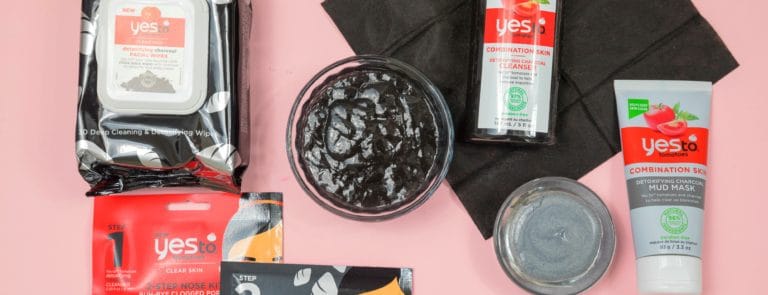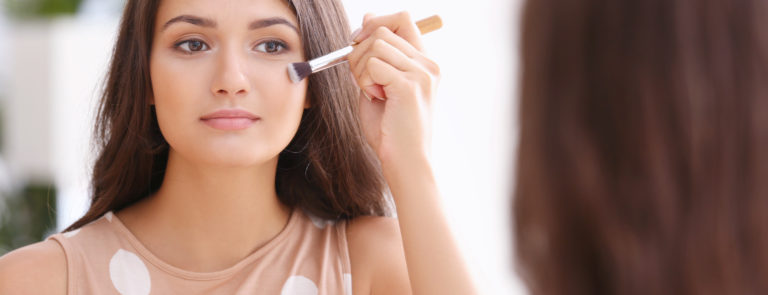15% off €25
Code:BASKET
Shaving rash: causes, cures and treatments
.png)
Is razor burn the price to pay for fuzz-free follicles? Here we answer some common questions about how to get rid of shaving bumps.
Summary
1What causes shaving rash?
Anyone can suffer from shaving rash. However, if you have naturally sensitive skin, you may be more prone to uncomfortable breakouts than others...
2How can I prevent shaving irritation and razor bu
Preparing your skin properly, before you reach for the blade is the first step to smooth and rash-free skin. Top tips for preventing shaving rash...
3What’s the best way to treat shaving rash?
Most often, the best way to treat shaving bumps and rashes is time. There’s also a range of home remedies which may help speed up the healing...
Is razor burn the price you have to pay for fuzz-free follicles? Shaving with a razor is arguably the fastest, easiest and cheapest way to remove unwanted facial and body hair.
For millions around the world, shaving is a regular part of their morning skincare and grooming regime. But what causes red and itchy shaving rash? Does everyone get it? And can it be prevented? Here we discuss shaving irritation and answer some common questions about how to get rid of razor bumps.
What does a shaving rash look like?
Have you noticed your skin is inflamed, red and itchy after shaving? Maybe you get uncomfortable lumps, unsightly bumps, and even ingrown hairs? Shaving rash, razor burn, and razor bumps are unpleasant, yet common side effects of shaving with a razor to remove unwanted body hair.
What causes shaving rash?
Anyone can suffer from shaving rash. However, if you have naturally sensitive skin, you may be more prone to uncomfortable breakouts than others. Shaving rash can appear anywhere on your body – your face, your legs, underarms, bikini line. Anywhere you use a razor is vulnerable to razor burn.
The tender, red and itchy rash you get after shaving can be caused or aggravated by a combination of factors. These include the type of razor you use, your shaving technique, and your skin type.
If managing annoying (and uncomfortable) post-shave bumps is part and parcel of your daily skincare routine, it could be that you’re suffering from ingrown hairs caused by shaving with a razor. Pseudofollicullitis (to give it its medical name) occurs when the cut hair stubble curls back on itself and continues to grow under the skin.1 This causes flesh coloured bumps to appear. Stubble is tougher than regular, young hair, so it’s easy to see how it can cause such aggravation.
According to the British Association of Dermatologists, it’s a condition more prevalent in people with curly hair.2 Over time, ingrown hairs can get uncomfortable and even become infected. So, it’s important to treat (and where possible, prevent) them as soon as possible.

How can I prevent shaving irritation and razor bumps?
Preparing your skin properly, before you even reach for the blade is the first step to smooth and rash-free skin. Here we share top tips for preventing shaving rash from skincare experts, including the British Association of Dermatologists.
7 tips for the best shave
- Exfoliate. Exfoliating before shaving helps remove the dead skin and lifts the hairs away from the skin’s surface.
- Moisturise. Keeping your skin moisturised before shaving and in between shaves not only helps reduce the risk of razor rash, it also keeps your skin feeling supple and smooth for longer.
- Lather up. Giving your skin a mini spa treatment can work wonders. Plenty of lather from your favourite shaving cream and lukewarm water helps lubricate the skin, softens the stubble and lifts the hair follicles. This gives your skin the best preparation and protection against the harsh razor.
- Shave the right way. Skincare experts recommend shaving in the same direction as the hair growth and not stretching the skin too tightly.3
- Give your skin a break. Don’t shave every day. Every other day is ideal.4
- Use new, single blade razors. Using old, blunt razors is a sure-fire way to encourage razor rash. Using a sharp new razor is one of the best ways to keep your skin smooth and rash-free. The British Association of Dermatologists also advises single blade razors over double or triple blades.
- Don’t pluck. As annoying as stray hairs may be, avoid plucking. It will only make the problem worse.5
What’s the best way to treat shaving rash?
Most often, the best way to treat shaving bumps and rashes is time. If you want to give your skin a gentle nudge in the right direction, there’s also a range of home remedies which may help speed up the healing process or give some light relief to the aggressive red patches and uncomfortable itching.
- Using a cool compress or cooling avocado or aloe vera oil can help soothe heat or itching.5
- Alternatively, an emollient moisturizer can alleviate dryness and itching.
- It’s also best to avoid using products that contain alcohol as they can aggravate and make the irritation worse.
Home remedies for shaving rash include:
- witch hazel extract
- tea tree oil
- running an oatmeal bath6
- additionally, topical steroid ointments can help soothe and repair skin damaged from razor burn.
Speak to your pharmacist or GP for advice before using steroidal topical skin treatments and discontinue use if you notice any unwanted side effects.
How long does shaving rash take to disappear?
The good news is that razor burn isn’t usually a permanent problem. Treated appropriately and promptly, the rash should disappear within a few days. A good skincare and pre-shave regime will help eliminate shaving rash for good.
Take note, continuing to shave and shaving over existing razor rash is likely to make matters worse. Instead, give yourself (and your skin) a break and lay off the razor for a few days. You should start to notice a reduction in irritation in this time.
However, it can take a little longer for razor bumps to disappear. Ingrown hairs can take up to four to six weeks to settle and the hair will take this time to grow to a length where ingrowth won’t recur. You’ll need to be patient.7
Alternative hair removal techniques
If you’re ready to ditch the razor, but still yearn for a clean-shaven, smooth-skin look, other hair removal techniques include:
- Depilatory creams. These can be effective, though some people report skin irritation from the ingredients. It’s typically messier than shaving and needs to be repeated often.

- Waxing. This is suitable for most areas of the body but can be painful and can still be the cause of ingrown hairs.
- Laser hair removal. This is a longer-lasting, semi-permanent solution and can result in smooth skin for six months or even longer. When hair grows back, it’s often finer and less noticeable. Higher upfront costs than other hair removal processes can make it seem more expensive, but costs may balance out over time. Laser hair removal can cause increased pigmentation in darker skin.
Summary: Shaving rash is unpleasant, but not permanent
Shaving rash is unpleasant, but it’s rarely permanent. And the good news is, with plenty of treatments and advice on pre, and post-shave skincare regimes, there’s no need to suffer in your pursuit of fuzz-free follicles.
This article provides informational advice and is not a substitute for medical care. Curated by experts for accuracy, we take great care to ensure the information is up-to-date and relevant. However, you should always consult your GP or healthcare professional before using supplements or alternative products, particularly if you have medical conditions or are under supervision.
- https://www.bad.org.uk/patient-information-leaflets/pseudofolliculitis
- https://www.bad.org.uk/patient-information-leaflets/pseudofolliculitis
- https://www.bad.org.uk/patient-information-leaflets/pseudofolliculitis
- https://www.bad.org.uk/patient-information-leaflets/pseudofolliculitis
- https://www.bad.org.uk/patient-information-leaflets/pseudofolliculitis
- https://www.healthline.com/health/how-to-get-rid-of-razor-burn
- https://www.healthline.com/health/how-to-get-rid-of-razor-burn
- https://www.bad.org.uk/patient-information-leaflets/pseudofolliculitis



